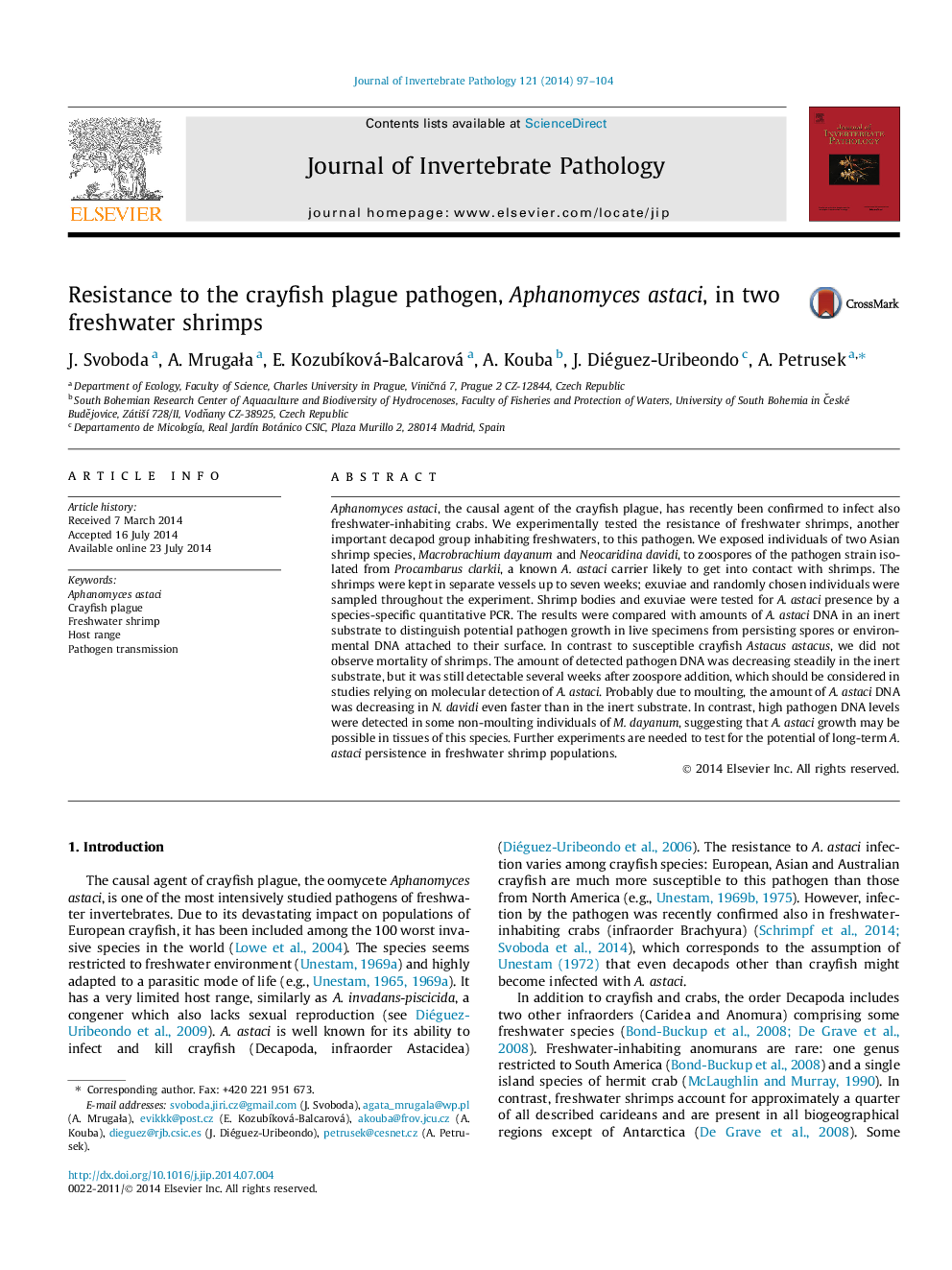| کد مقاله | کد نشریه | سال انتشار | مقاله انگلیسی | نسخه تمام متن |
|---|---|---|---|---|
| 4557703 | 1628231 | 2014 | 8 صفحه PDF | دانلود رایگان |

• Macrobrachium and Neocaridina shrimps were exposed to Aphanomyces astaci spores.
• These freshwater shrimps did not die after exposure to 1000 A. astaci spores per ml.
• Shrimps can reduce attached spores or initial infection through frequent moulting.
• DNA quantification suggests some A. astaci growth in M. dayanum exuviae and bodies.
• DNA from A. astaci spores was detectable on an inert substrate after seven weeks.
Aphanomyces astaci, the causal agent of the crayfish plague, has recently been confirmed to infect also freshwater-inhabiting crabs. We experimentally tested the resistance of freshwater shrimps, another important decapod group inhabiting freshwaters, to this pathogen. We exposed individuals of two Asian shrimp species, Macrobrachium dayanum and Neocaridina davidi, to zoospores of the pathogen strain isolated from Procambarus clarkii, a known A. astaci carrier likely to get into contact with shrimps. The shrimps were kept in separate vessels up to seven weeks; exuviae and randomly chosen individuals were sampled throughout the experiment. Shrimp bodies and exuviae were tested for A. astaci presence by a species-specific quantitative PCR. The results were compared with amounts of A. astaci DNA in an inert substrate to distinguish potential pathogen growth in live specimens from persisting spores or environmental DNA attached to their surface. In contrast to susceptible crayfish Astacus astacus, we did not observe mortality of shrimps. The amount of detected pathogen DNA was decreasing steadily in the inert substrate, but it was still detectable several weeks after zoospore addition, which should be considered in studies relying on molecular detection of A. astaci. Probably due to moulting, the amount of A. astaci DNA was decreasing in N. davidi even faster than in the inert substrate. In contrast, high pathogen DNA levels were detected in some non-moulting individuals of M. dayanum, suggesting that A. astaci growth may be possible in tissues of this species. Further experiments are needed to test for the potential of long-term A. astaci persistence in freshwater shrimp populations.
Figure optionsDownload as PowerPoint slide
Journal: Journal of Invertebrate Pathology - Volume 121, September 2014, Pages 97–104